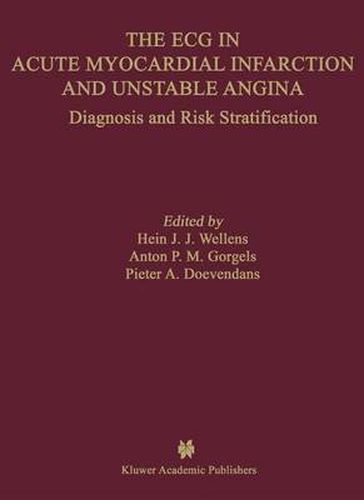Readings Newsletter
Become a Readings Member to make your shopping experience even easier.
Sign in or sign up for free!
You’re not far away from qualifying for FREE standard shipping within Australia
You’ve qualified for FREE standard shipping within Australia
The cart is loading…






This title is printed to order. This book may have been self-published. If so, we cannot guarantee the quality of the content. In the main most books will have gone through the editing process however some may not. We therefore suggest that you be aware of this before ordering this book. If in doubt check either the author or publisher’s details as we are unable to accept any returns unless they are faulty. Please contact us if you have any questions.
The electrocardiogram (ECG) remains the most accessible and inexpensive diagnostic tool to evaluate the patient presenting with symptoms suggestive of acute myocardial ischemia. It plays a crucial role in decision making about the aggressiveness of therapy especially in relation to reperfusion therapy, because such therapy has resulted in a considerable reduction in mortality from acute myocardial infarction. Several factors play a role in the amount of myocardial tissue that can be salvaged by reperfusion therapy, such as the time interval between onset of coronary occlusion and reperfusion, site and size of the jeopardized area, type of reperfusion attempt (thrombolytic agent or an intracoronary catheter intervention), presence or absence of risk factors for thrombolytic agents, etc. Most important in decision making on reperfusion therapy and the type of intervention is to look for markers indicating a higher mortality rate from myocardial infarction. The ECG is a reliable, inexpensive, non-invasive instrument to obtain that information. Recently it has become clear that both in anterior and inferior myocardial infarction, the ECG frequently allows not only to identify the infarct related coronary artery, but also the site of occlusion in that artery and therefore the size of the jeopardized area. Obviously, the more proximal the occlusion, the larger the area at risk and the more aggressive the reperfusion attempt.
$9.00 standard shipping within Australia
FREE standard shipping within Australia for orders over $100.00
Express & International shipping calculated at checkout
Stock availability can be subject to change without notice. We recommend calling the shop or contacting our online team to check availability of low stock items. Please see our Shopping Online page for more details.
This title is printed to order. This book may have been self-published. If so, we cannot guarantee the quality of the content. In the main most books will have gone through the editing process however some may not. We therefore suggest that you be aware of this before ordering this book. If in doubt check either the author or publisher’s details as we are unable to accept any returns unless they are faulty. Please contact us if you have any questions.
The electrocardiogram (ECG) remains the most accessible and inexpensive diagnostic tool to evaluate the patient presenting with symptoms suggestive of acute myocardial ischemia. It plays a crucial role in decision making about the aggressiveness of therapy especially in relation to reperfusion therapy, because such therapy has resulted in a considerable reduction in mortality from acute myocardial infarction. Several factors play a role in the amount of myocardial tissue that can be salvaged by reperfusion therapy, such as the time interval between onset of coronary occlusion and reperfusion, site and size of the jeopardized area, type of reperfusion attempt (thrombolytic agent or an intracoronary catheter intervention), presence or absence of risk factors for thrombolytic agents, etc. Most important in decision making on reperfusion therapy and the type of intervention is to look for markers indicating a higher mortality rate from myocardial infarction. The ECG is a reliable, inexpensive, non-invasive instrument to obtain that information. Recently it has become clear that both in anterior and inferior myocardial infarction, the ECG frequently allows not only to identify the infarct related coronary artery, but also the site of occlusion in that artery and therefore the size of the jeopardized area. Obviously, the more proximal the occlusion, the larger the area at risk and the more aggressive the reperfusion attempt.